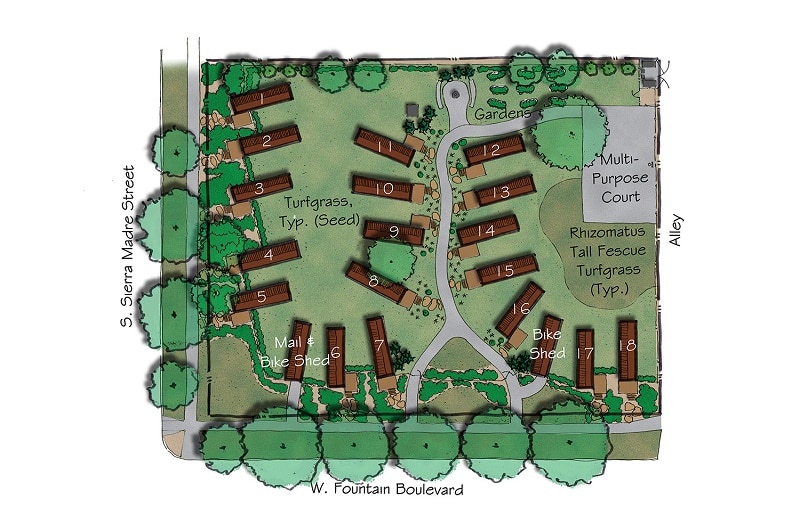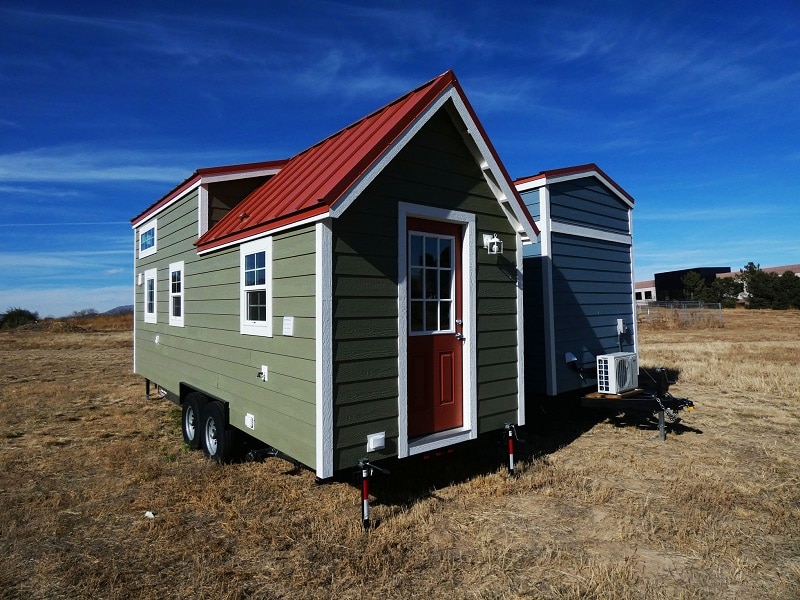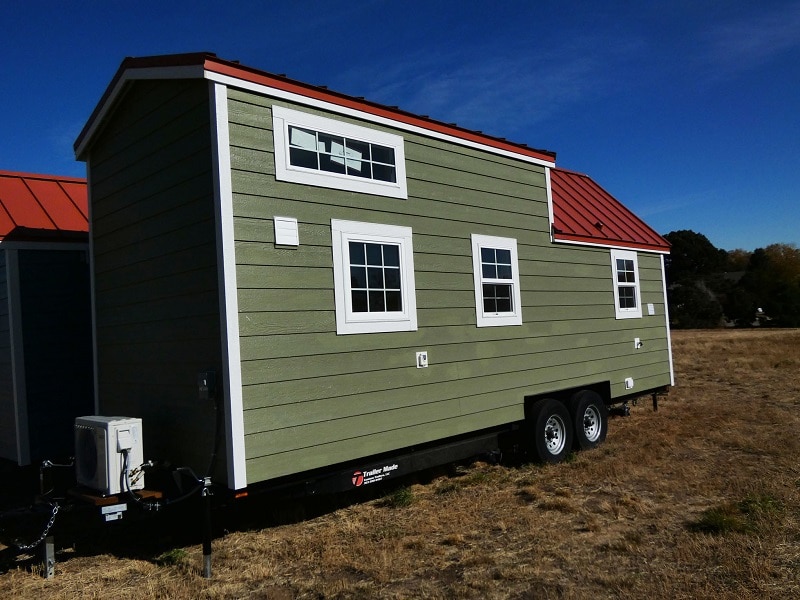
Part 2: Local Non-Profits Discuss the Working Fusion at Mill Street Project to Address Youth Homelessness
The tiny home fad has recently expanded, and some non-profit organizations have found ways to use the homes to help those who are less fortunate. Since the homes can be built more affordably than other forms of housing, some non-profits have become creative and found ways to utilize them. The fact that the homes are more efficient to live in has also made them admirable for producing housing for homeless people.
Earlier this year, construction started on the “Working Fusion at Mill Street” community in downtown Colorado Springs. The idea of this project was to provide temporary housing to homeless youth in order to get them into a better living situation down the road.
The tiny house community will not only be an affordable place to live, but resources will be available to help young homeless people find jobs and be able to find other housing after the transition period. The people who live at Working Fusion at Mill Street will pay rent to live in the tiny homes and will only be allowed to live there for two years.

Local Affordable Housing Experts Praise the Tiny Home Project
According to the Housing and Urban Development (HUD) Director in Colorado Springs, Steve Posey, HUD currently does not have any future affordable housing projects that include tiny homes in Colorado Springs, but there may be in other parts of the country. Posey said that the Mill Street tiny home project is not considered affordable housing, but its intention is to decrease the amount of people in homeless shelters.
He said that the local HUD has partnered up with the non-profit organization We Fortify to help with the Mill Street project. “We helped them buy one of the tiny homes because that is going to help so that we don’t have more of our young folks going into a shelter,” Posey said. “But that is more of what I would consider transitional housing where they can live in a tiny home for six months or a year until they get back on their feet and they are able to go into a more traditional apartment scenario.”
According to the director of Greccio Housing Lee Patke, We Fortify’s Founder, Shelley Jensen came up with a more innovative way than most affordable housing organizations use for developments. “You want to talk about out-of-the-box kind of thinking, Shelley Jensen just has a mind for that kind of development,” Patke said. “She is really an incubator of ideas and she is very innovative in her ideas with the Mill Street project.”

‘Working Fusion at Mill Street’ Plans to Move in its First Tenants
According to Jensen, the tiny home project is almost ready to the point where they can move in residents. Currently, the construction has finished on four of the tiny homes and four residents will be moving in the first part of next year.
In the end, the project will include 18 tiny homes on a piece of land that sits on the corner of South Sierra Madre Street and West Fountain Boulevard. Eleven of the homes are funded and the organization is looking to find sponsors for the remaining seven.
All of the people who will be living in the homes are between the ages of 18 and 25. Jensen said that all of the residents get referred from local organizations including homeless shelters for the youth.
While living at Working Fusion at Mill Street, residents will be a part of a community of others who are in similar situations, and they will pay $600 per month rent. The residents will also have access to health care and mental health providers while living in the homes.
Job training will also be available so that they can get a job with a living wage and are not forced to work multiple minimum wage jobs. The community also has plans on developing two social enterprise businesses that will provide the residents jobs and teach them workplace skills. Jensen said that Working Fusion plans to start a small construction company and a café to help teach their residents employable skills.
Jensen developed the idea of the project after travelling to India, Nicaragua, Guatemala, and Detroit to research what it took to end homelessness. She said she found that pivoting from poverty required people to have housing in a supportive community, consistent health care, life skills and a job that pays them a living wage.
Jensen said that she chose to use tiny homes for this project for three reasons. “For one, they fit the ‘pro forma’ from a housing perspective,” Jensen said. “Two, they are still on wheels. We are leasing the land, so in the event we are unable to buy it, we will be able to drive our capital off. And, three, they are just stinking cute.”
All of the tiny homes in the community will have fully functional bathrooms and a washer and dryer. The homes will only allow one resident, which will offer each person privacy within a close-knit community of their peers.
Note: This article is part two of a three part series examining tiny homes in the Pikes Peak Region.










[…] Two years ago construction commenced on the Working Fusion at Mill Street project which was Jensen’s way to help young adults experiencing homelessness by providing temporary housing. Now two years after the project started, the community is almost complete and residents have lived in the tiny home community for nearly two years. […]